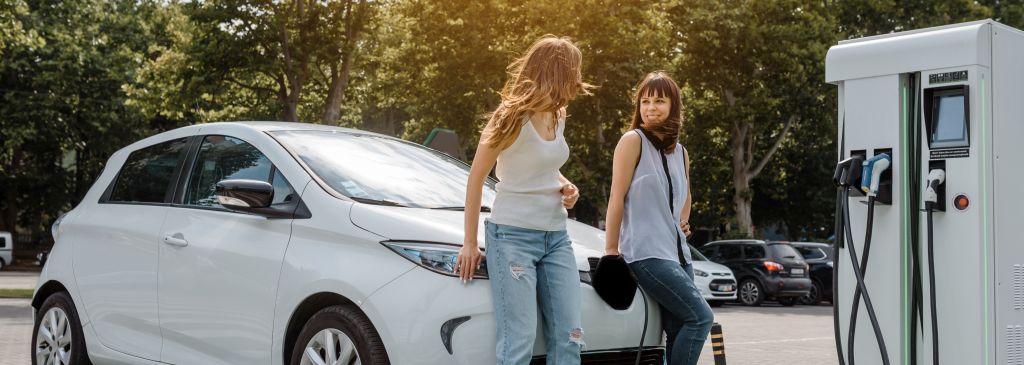A while ago you could have thought e-cars are a thing of distant future -an element of everyday life that seemed like science-fiction. But electric vehicles are becoming increasingly popular as we speak. There are many factors that contribute to this popularity, for example environmental awareness and sustainability. But not everybody realises how exactly these cars work and what makes them different from vehicles with combustion engines. This time we wanted to clarify all those doubts!
In this article you will find out:
- how does an electric car work,
- the story behind electric cars,
- the differences between e-cars and combustion engines,
- how an electric engine works,
- the pros and cons of e-vehicles.
The story behind electric vehicles
First attempts
Electric engines were invented more or less at the same time as engines powered with fossil fuels. A prototype of such an engine was created by a Hungarian engineer, Ányos Jedlik, who installed his invention in a small car model as early as 1828. In 1834 Thomas Davenport, a blacksmith, came up with a similar device, which could run a short distance using electric traction (therefore it can be perceived as a prototype of what we now know as a tram). Electric engines were also studied by academics – professor Sibrandus Stratingh from a Dutch university constructed a small electric car powered with disposable batteries.
Revolution
1859 saw a breakthrough when a French physicist, Gaston Planté, contributed to inventing a lead-acid battery. In many countries all over the world three-wheeled electric cars were soon manufactured. But it was only in 1891 in the United States that the first electric car was produced in the form of a large wagon, which could take up to six people and run at a speed of 23 km/h. In the late 19th century first electric cabs appeared in the streets. What is interesting, in the early 20th century one in three cars in the United States was electrically powered. Electric engine had more advantages than steam and combustion engines, which were noisy, difficult to launch and released stinking fumes.
Pushed to the background
The 1920s saw a dramatic change, when the popularity of electric cars dwindled. The quality of American roads improved rapidly, which meant you could drive much faster even when a car was powered by a combustion engine. Electric cars could run at a maximum speed of 32 km/h and the distance they could cover on a single charge was between 50 and 80 kilometres. Cars powered by combustion engines offered much better performance in this respect, because they could cover a longer distance over a shorter period of time. Petrol and diesel engines were becoming increasingly popular, especially after Henry Ford launched his factory in 1910. Exhaust emission was reduced and silencers helped eliminate the noise. Plus, combustion engines were mass produced, which means they were much cheaper. This is when electric cars almost disappeared from the market for a while.
Back on track
Electric vehicles regained their popularity only in the 21st century. Thanks to advanced technology people could make the most of electric engines. More and more is said about the future of our planet in the context of sustainability. We might soon run out of natural resources used to power combustion engines. This means drivers are more willing to choose e-vehicles.
In 2018 as many as 2 million electric cars were sold. In 2019 there were even more – 2.2 million. The popularity of electric cars seems to be increasing.
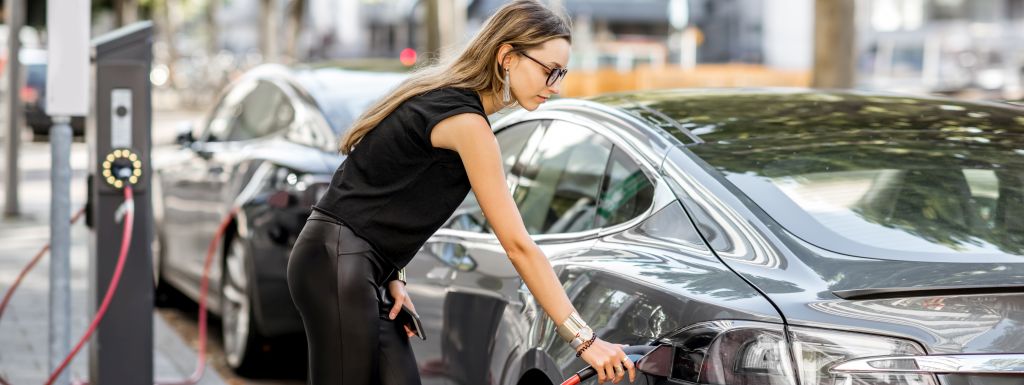
E-cars – what makes them different?
Highlights
The basic difference between electric cars and petrol/diesel vehicles is that the former use electricity from renewable sources. The technique is fairly simple. The engine relies on alternating current – the same we use for a microwave oven or a gaming console. A combustion engine needs fuel, which means it relies on chemical and thermodynamic conversions. An electric engine needs electricity, so it operates on electrodynamic and magneto-dynamic conversions. In a combustion engine made of cylinders, pistons, vents and a crankshaft, there is a crank and piston system, while an electric engine includes a stator and a rotor.
Advantages of electric engines
The advantages of electric engines include silence, no toxic emissions and invariable running costs (electricity prices do not fluctuate so dynamically as fuel prices). E-cars are much less harmful for the environment than vehicles with combustion engines. The enthusiasts of electric cars would also mention better performance and simple construction, to add to the list of advantages – both entail ease of use and lower probability of a breakdown. A good electric car is also economical. This is important mainly for those drivers who spend most of their time cruising around the city. In traffic jams, cars with combustion engines consume a lot of fuel, so an electric vehicle will be much cheaper – especially if you decide to have your own charging station, e.g. a Wallbox mounted on your garage wall.
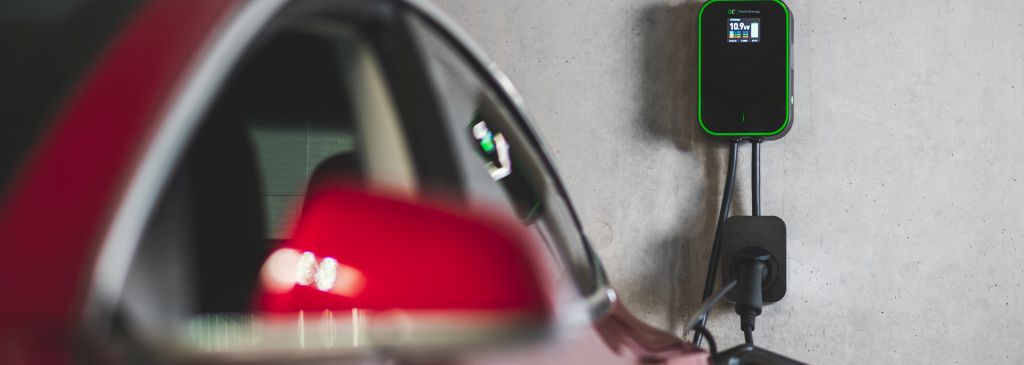
Disadvantages of electric engines
Although e-cars have a number of advantages, there are also certain drawbacks that should be pointed out. The first and most important one is the frequent need for recharging – an electric vehicle will cover a shorter distance on a single charging than a combustion-engine powered car filled up with petrol/diesel. Plus, there are fewer charging points than traditional petrol stations. It’s good to remember that a car battery will normally take a few hours to charge – depending on the model and charging mode, it could even be a dozen hours. Although e-vehicles are becoming increasingly popular, they can boast a better performance, and there are more charging stations in the cities, some people will still choose a traditional, readily available car powered by a combustion engine.
How does an electric engine work in a car?
Basic information
An electric engine is a fairly small mechanism – it’s usually the size of a regular vacuum cleaner. Electric cars can boast full torque from zero speed (up to a dozen thousand rpm or more) – which cannot be said of a combustion engine. In the latter case, torque and power depend on rotational speed. In electric cars you don’t need a gearbox with a few gears and a clutch. Plus, an e-car can convert as much as 85% of its energy supply into motion. Single-speed transmission (and more precisely, single-speed reduction gearbox) sends energy from the induction motor to the wheels. This is how electric energy is converted into mechanical energy, which makes the wheels move the whole vehicle from point A to point B.
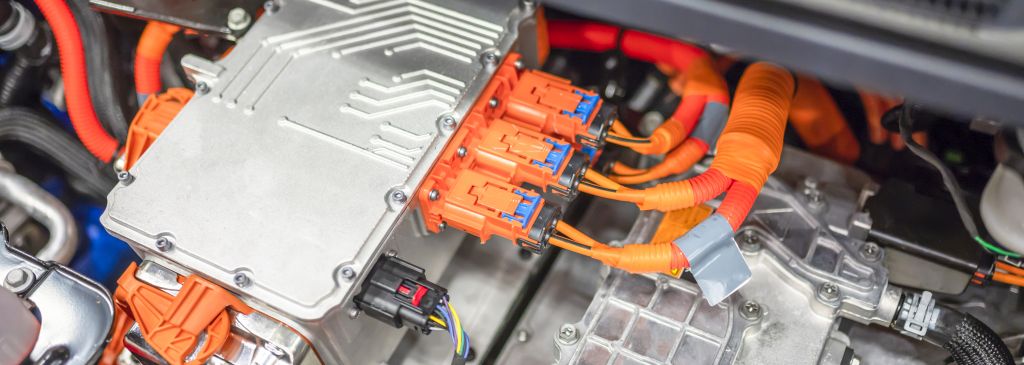
Cells
The crucial element of the system is a traction battery, which is assembled in the form of serial cells as part of the chassis. It may weigh up to a half ton and include seven thousand Li-Ion batteries mounted under the car floor. This battery can boast a longer life and a higher power density. The downside is, it is prone to overheating. That’s why cooling liquid is used between the cells. Low centre of gravity ensures stable driving conditions.
Induction motor
In the back of the car you have an inverter, which converts direct current into alternating current. This is possible thanks to the induction motor, which accumulates alternating current (produced by the inverter) and creates rotating magnetic field. This is what makes the engine work. The energy accumulated in the battery is supplied to the motor and then the gearbox transports it further to the wheels. It should be noted that an electric car can recover part of the energy during the braking process, which serves to extend its range.
Charging an electric car – available methods
An electric car is charged when connected to an external power supply, i.e. a socket. Battery capacity and charging method are two important factors which affect the length of the charging process.
Charging electric car at home
Many people wish to recharge their e-cars at home and use a regular socket or a private Wallbox. The former solution is cheaper, but it means you will have to wait longer before your car battery is 100% charged. The waiting time could be up to 24 hours, because a regular socket at home offers 230V/16A alternating current (AC), which means the battery will receive 2.2-3 kW in one hour. On the other hand, a Wallbox can recharge your battery 10 times faster, with a charging power of up to 22kW. This solution is good, but it requires a lot of time and money to start with – before you can install a Wallbox, you need to organise an electrical audit and obtain necessary permits (if you live in a block of flats or use a shared parking lot). But if you have a garage all t yourself and want to go for a fast charging option, a Wallbox is definitely worth considering. If you feel you might be interested in this option, explore WallBox by Green Cell.
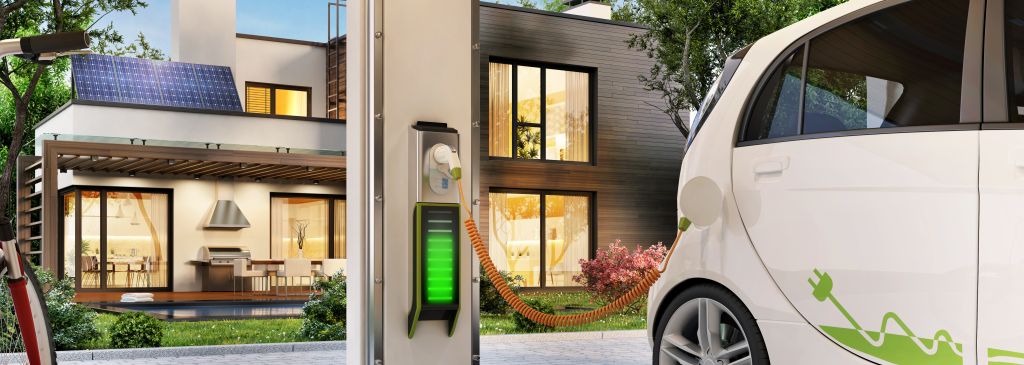
Public charging stations
A quick and readily available alternative to charging your e-car at home is a public charging station. They use direct current (DC), which means they offer a power of 25 – 150 kW. The fastest chargers – with a power of 150 kW – will recharge your car battery in twenty or thirty minutes. What stops most drivers from using this option is the fact that public charging stations are still few and far between, which means the nearest station may be a long way away.
Mobile charger
It’s good to know that car batteries can also be replenished with a mobile charger, such as Green Cell EV PowerCable. This model will recharge your electric car with a power of up to 3.6 kW when connected to a regular socket. Most mobile chargers that come with e-cars take much longer (they need up to 75% more time!) This means you can recharge your e-vehicle with a power of 3.6kW from a regular socket. A mobile charger by Green Cell is a fast and convenient alternative to other methods of replenishing your car battery. More importantly, it’s always available and designed to withstand any conditions.

Summary
Although electric cars first appeared in the early 19th century, they reached their peak popularity after 2000. This technology is now on the increase. And you can readily grasp the principles of electric engines, because they are fairly simple, if different from traditional combustion engines. This is why electric cars are considered reliable and are frequently chosen by contemporary drivers.
If you are interested in an EV or already have one, explore the range of products available in Battery Empire and pick a few essentials to recharge your car!
Veronica Jones
Related posts
Most viewed entries
- Electricity in a camper van on holiday – a conundrum easily solve
- Off-grid installation on a plot. Is it worth it?
- Charging your electric car at home without a wallbox
- Inverter – what it is and what it is used for
- Zero VAT on energy storage in the UK possible soon
- Greece sets aside €200 million for photovoltaic subsidies!

